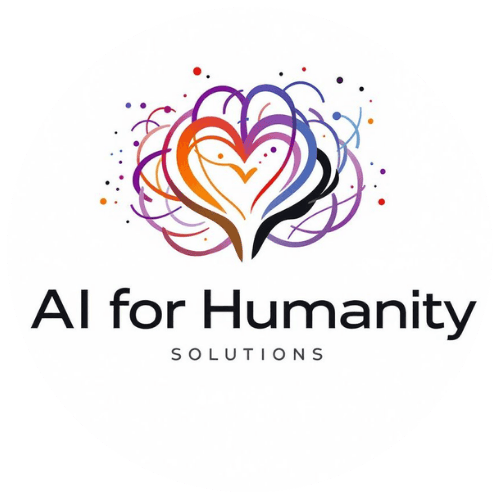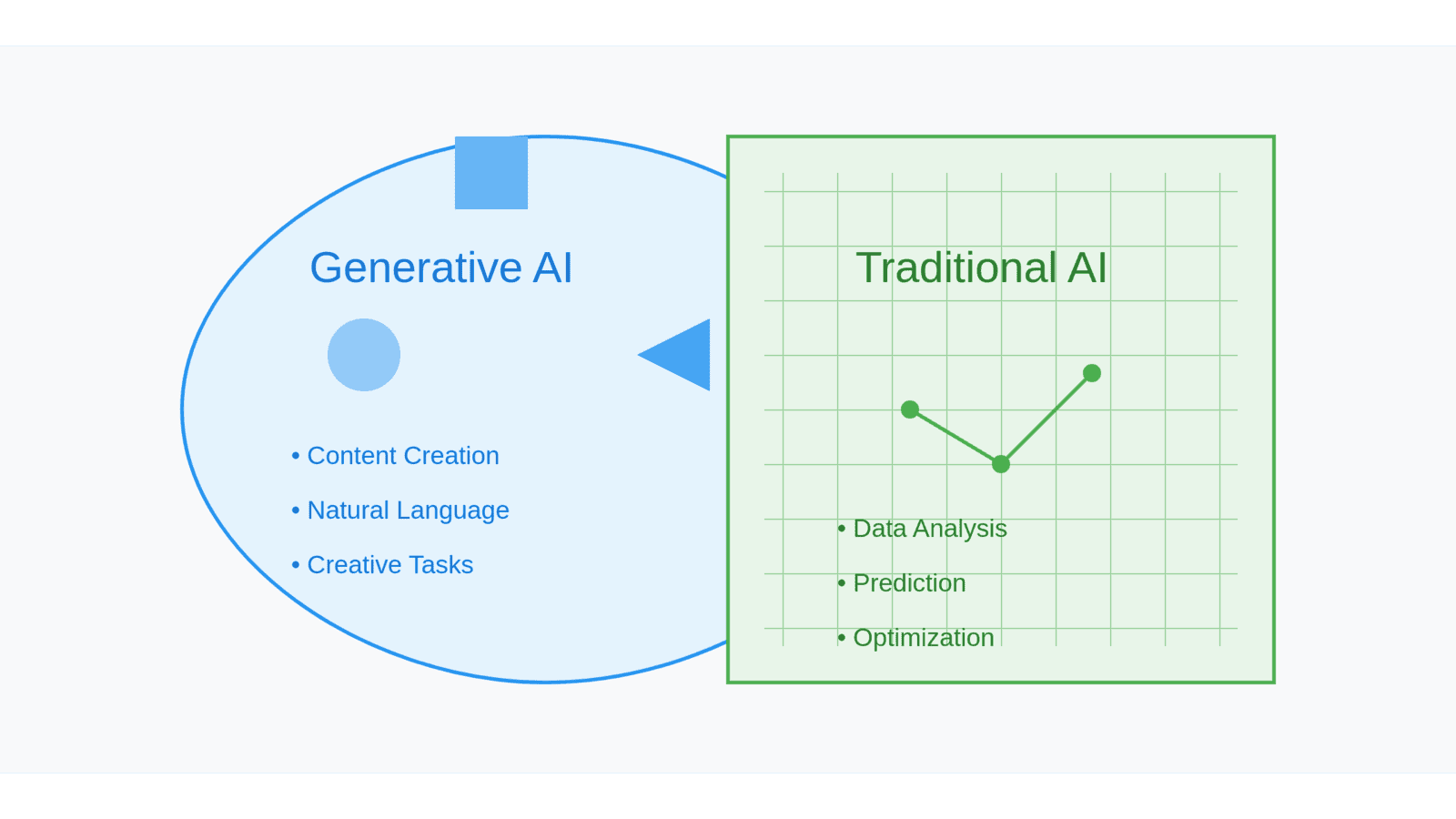A Comprehensive Guide


In today's rapidly evolving technological landscape, Artificial Intelligence (AI) continues to revolutionize industries across the board. However, not all AI solutions are created equal. Understanding the key differences between Generative AI and Traditional AI is crucial for leveraging their unique strengths effectively.
Understanding the AI Landscape
What Is Generative AI?
Generative AI represents a breakthrough in artificial intelligence that specializes in creating new content. Whether it's text, images, videos, or other media formats, these systems analyze patterns in their training data to generate fresh, contextually relevant content. This makes them particularly valuable for tasks requiring creativity and personalization.

Key Strengths:
- Content Creation: Excels at writing articles, generating marketing copy, creating visuals, and even composing music
- Conversational Interfaces: Powers sophisticated chatbots and virtual assistants
- Knowledge Exploration: Efficiently summarizes documents and provides detailed responses to complex queries
Limitations:
- Reliability Concerns: May produce inconsistent or inaccurate outputs, especially in specialized contexts
- Decision-Making: Not ideal for tasks requiring precise, explainable decisions
- Forecasting Capabilities: Limited effectiveness in predictive tasks
What Is Traditional AI?
Traditional AI systems focus on data analysis, prediction, and optimization. These systems excel at solving structured problems and delivering consistent, measurable outcomes through well-established mathematical and statistical methods.
Key Strengths:
- Prediction and Forecasting: Excellent at identifying trends and patterns in data
- Process Automation: Streamlines repetitive tasks with high accuracy
- Decision Support: Provides data-driven insights for complex decision-making
Advantages Over Generative AI:
- Structured Problem-Solving: More reliable for tasks with clear objectives
- Transparency: Offers better explainability of decision-making processes
- Consistency: Delivers more reliable and reproducible results
Making the Right Choice
When to Use Generative AI
Generative AI shines brightest in scenarios requiring:
- Creative content generation and ideation
- Natural language interactions with users
- Personalized customer engagement
- Content summarization and transformation
When to Use Traditional AI
Traditional AI remains the optimal choice for:
- Predictive analytics and forecasting
- Process optimization and automation
- Risk assessment and management
- Data-driven decision support systems
Alternative Approaches
Sometimes, neither type of AI may be the best solution. Consider:
- Simulation-based modeling for complex scenarios
- Specialized optimization algorithms
- Human-AI hybrid approaches for nuanced decision-making
Looking Ahead
The future of AI applications lies in:
- Integration of both AI types for comprehensive solutions
- Enhanced autonomous systems
- Improved decision intelligence capabilities
- Better explainability and accountability
Conclusion
Success in implementing AI solutions depends on understanding the strengths and limitations of both Generative and Traditional AI. By choosing the right tool for each specific use case, organizations can maximize the benefits while minimizing potential drawbacks.
Want to learn more about implementing AI in your business? Consider exploring professional training options to deepen your understanding of these transformative technologies.
This article was last updated on January 9, 2025

